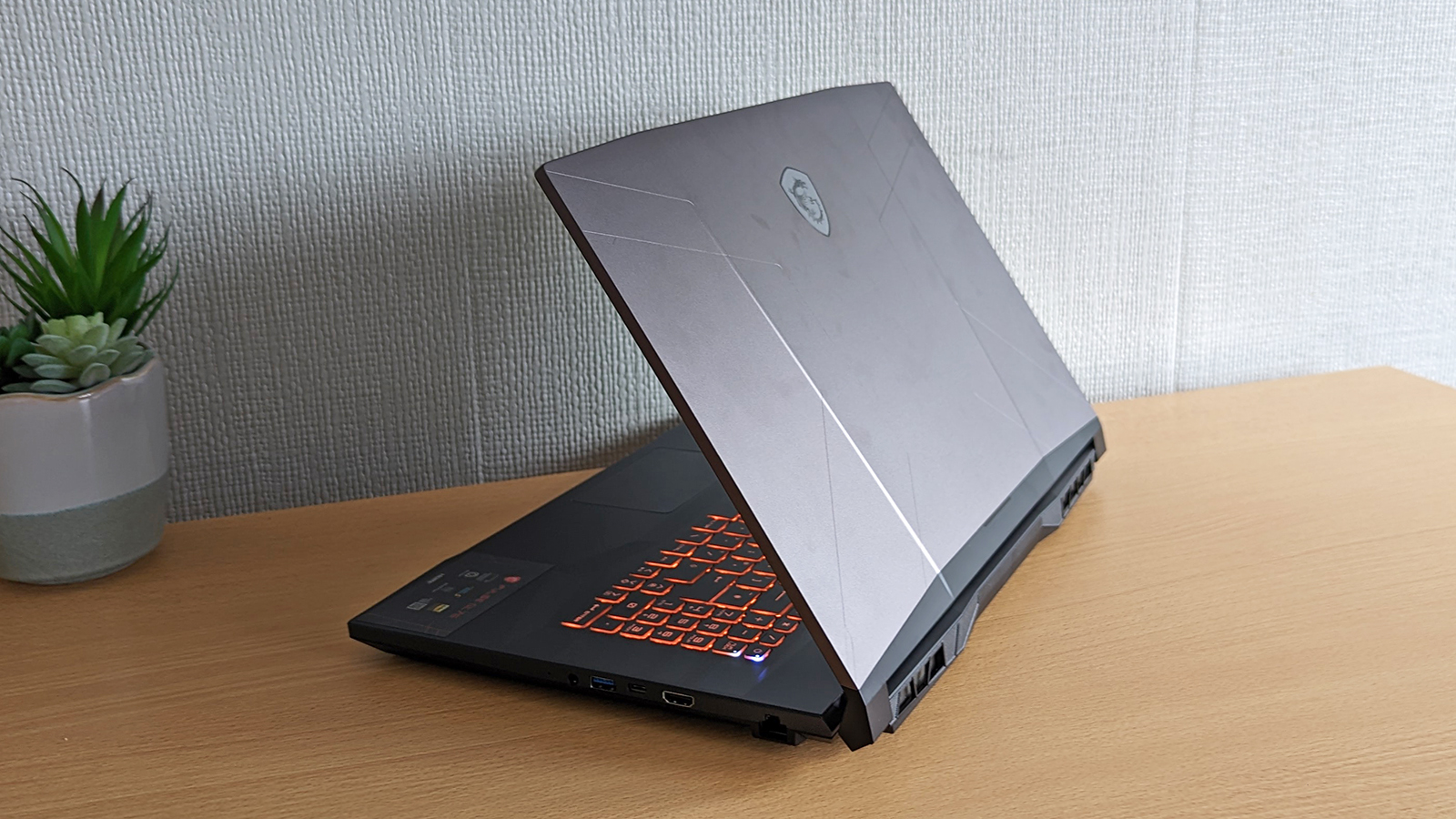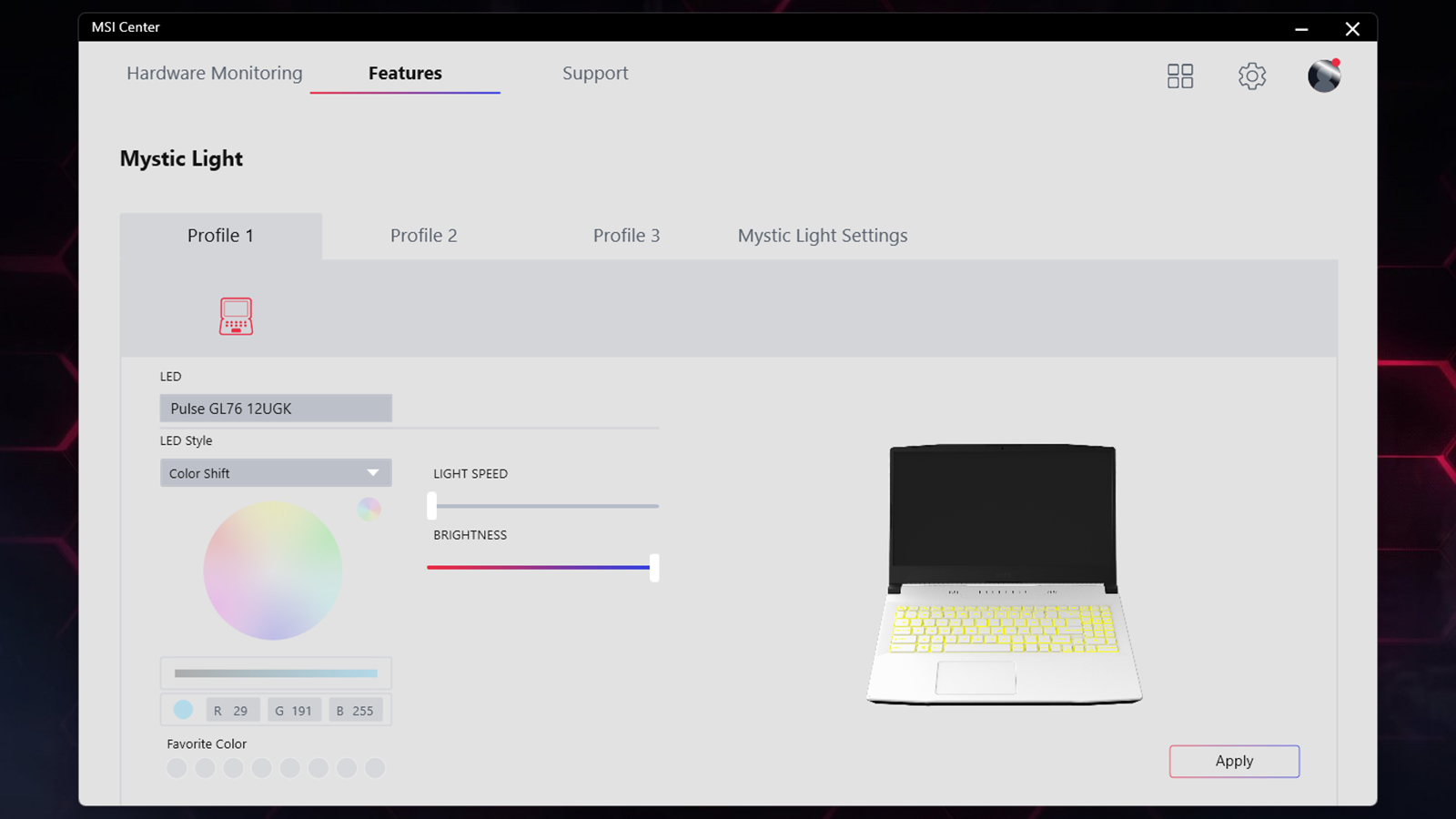MSI Pulse GL76 review: a high-end 17-inch gaming laptop
The MSI Pulse GL76 has a few weaknesses and some key strengths


The MSI Pulse GL76 isn't quite the perfect gaming laptop, but it certainly packs a punch in terms of its CPU and GPU performance, and will run the latest and greatest games with no problem at all – plus everything looks fantastic on the 17.3-inch 360Hz display.
-
+
Top-tier GPU performance
-
+
Large, high refresh rate screen
-
+
Customisation software
-
-
More bulky than most
-
-
The trackpad is too small
-
-
Does get very hot at times
Why you can trust T3

MSI is looking to nab yet another spot on the best gaming laptops list with the MSI Pulse GL76, a big and powerful laptop that packs inside it a 12th-gen Intel Core i9 processor and an Nvidia GeForce RTX 3070 graphics card – a powerful set of specs by any measure.
In our comprehensive MSI Pulse GL76 review, we'll go through everything you need to take into consideration when you're deciding if this is the next laptop for you, including how it handles the latest games, the design and feel of the laptop, and its current pricing.
You might need more than just this laptop though to make your gaming setup complete: we've also got guides to the best gaming desk, the best gaming chair and the best gaming monitor that are worth checking out if you're shopping for even more equipment.
MSI Pulse GL76: price and availability
The MSI Pulse GL76 is available to buy now from a variety of retailers in the UK and the US. Check the widgets embedded on this page for the latest deals available on the web.
At the time of writing you can pick up the spec that we reviewed – the Pulse GL76 12UGK – for around £1,900 in the UK from places such as Overclockers and Scan. In the US, the retail price is around $1,700.
MSI Pulse GL76 review: design and screen

If you've been keeping an eye on MSI gaming laptops in recent years then the design of the Pulse GL76 won't come as any surprise: it follows the tradition of mostly understated, subtle design, even though this time around MSI has collaborated with 3D artist Maarten Verhoeven on the aesthetics front. This partnership is most in evidence on the laptop lid, where you get a ridged, gunmetal grey finish – it gives the laptop a touch of style and finesse without going so far as to seem ostentatious.
Otherwise the design is relatively routine: the 17.3-inch screen dictates the size of the laptop, and with dimensions of 398 x 273 x 27.3mm you're going to need a fair bit of desk space to accommodate it – and it also weighs a not inconsiderable 2.8kgs. Of course you're not going to buy a 17-inch gaming laptop if you need something that's going to easily slip into a backpack, but this is a fairly hefty machine.
Get all the latest news, reviews, deals and buying guides on gorgeous tech, home and active products from the T3 experts
The laptop is relatively decent when it comes to providing ports, as you've got two Type-A USB 3.2 Gen 1 ports, one Type-A USB 2.0 port, one Type-C USB 3.2 Gen 1 port, one HDMI 2.0 port, and an Ethernet port. It's not the most we've ever seen, but it's enough for the majority of people. There's also a 3.5mm port that doubles up as a connector for both a microphone and a pair of headphones, and a fairly standard 720p webcam embedded into the bezel above the display.
That 17.3-inch screen runs at a native resolution of 1920 x 1080 pixels, but the stand-out feature is the 360Hz refresh rate – which enables games to glide along. While you wouldn't want to use this for colour-accurate creative work, it's really good for games and movies, if not the best 17-inch panel we've ever come across. The 360Hz maximum refresh rate is clearly the stand-out feature here, with everything else about the display (including resolution) a little less than the best in class.
MSI Pulse GL76 review: performance and features

The MSI Pulse GL76 certainly comes well-equipped for gaming, with the specs in our review model led by an Nvidia GeForce RTX 3070, followed by a 12th-gen Intel Core i9-12900H processor, 16GB of RAM, and 1TB of storage. You can also get this laptop with an RTX 3070 Ti, and go down to an Intel Core i7 processor if you want, so there is some flexibility in terms of the configuration and how much you have available to spend.
At a 1080p resolution, we were getting a smooth 50-70 frames per second in both Grand Theft Auto V and Red Dead Redemption 2, with the graphics settings ramped right up – turn down some of those effects and of course the frame rate will go up even further. Games look rich, vibrant and realistic on this laptop, with no stuttering or artefacts to speak of, and that will apply no matter what game you're trying.
In the 3DMark Time Spy benchmark we ran, the laptop scored 9,671 with the fans whirring at top speed and maximum volume (about half the level of a hairdryer, we'd say). According to the benchmark itself, that's good enough to run Battlefield V at more than 90 frames per second at a 1440p resolution and top graphics settings. For reference, high-end desktop gaming PCs average out at 11,085 on the same benchmark, so the laptop is certainly doing just fine in that regard.
Our testing was done in the highest performance mode, and it's worth pointing out that the fans are really going to whine loudly and pretty much constantly while this is enabled (as with Time Spy). You'll need some powerful speakers or headphones to drown it out, and the underneath of the laptop got very hot to the touch while we were gaming as well: this isn't a laptop that you're actually going to be able to put on your lap.

The standard MSI Center software is available, too, enabling you to control the balance you want between performance, battery life and fan speed (or you can let the software optimise these settings on your behalf). The same application gives you control over the keyboard lighting: while you can't control the lighting on keys individually, you can choose between a few different modes (both static and animated), and a wealth of colours.
Speaking of the keyboard, the keys have a good amount of travel and are well spaced on the chassis, even if they are a bit soft in terms of the tactile feedback that comes through to your fingers: we can imagine you'd be able to tap out an essay or two on this with no problem at all, if you had to. The trackpad is nothing to write home about meanwhile, and is a bit too small in our opinion, especially considering the overall size of the laptop.
When it comes to battery life, an hour of streaming video over Wi-Fi at a low volume and maximum screen brightness knocks the battery percentage down by 16 per cent – so that works out at around 6-7 hours of video watching in total. Gaming drains the battery much more quickly, of course, at around 15 per cent every 15 minutes (giving you less than two hours total). As with the majority of gaming laptops on the market, you'll need to keep it plugged into a power source for most of the time.
Other points worth noting: the stereo speakers are fine but nothing more than that, and the laptop comes with Wi-Fi 6, which is only just starting to be edged out by Wi-Fi 6E as the fastest wireless network connection standard. That RTX 3070 GPU is what's going to attract the majority of people to this laptop though, and it's going to be able to cope comfortably with the most demanding games of the moment.
MSI Pulse GL76: verdict

Put an Intel Core i9-12900H CPU and an Nvidia GeForce RTX 3070 GPU inside a laptop and it's going to do the business as far as running the best games of today – and in that respect the MSI Pulse GL76 has to score highly. It's got some of the top gaming laptop components packed inside, and if you decide to spend your money on this then you're going to have no complaints about how fast games run or how they look on the 17.3-inch display.
As for everything else – it's not disappointing or underwhelming exactly, but just a bit more run-of-the-mill. We like that MSI has at least made an effort in jazzing up the design, with the help of Maarten Verhoeven, and if you like your gaming laptop design understated but not too understated then this is likely to appeal. As ever from MSI, the whole chassis is well put together and is going to last you a long, long time.
The laptop does get a bit hot and a bit loud at times, and we can't give top marks in areas like sound quality or trackpad design either. Ideally, we'd want to see DisplayPort and the latest HDMI 2.1 standard supported too. All this has to be weighed against the price of the MSI Pulse GL76 of course, which is definitely towards the more reasonable end of the scale considering everything that's packed inside.
None of the downsides are enough to put us off the MSI Pulse GL76 completely, but they stop it from blowing away the competition – and there are a lot of very good gaming laptops out there at the moment, including plenty of others made by MSI. Ultimately, if you need a big screen with fast refresh rate and high levels of performance for a price that isn't at the top end, then this is going to catch your eye.
Also consider
Mosey on over to our list of the best gaming laptops to see everything else that the MSI Pulse GL76 is up against. If you want to max out on the specs, then we can recommend the Razer Blade 15 Advanced – it comes with an Nvidia GeForce RTX 3080 Max-Q inside, though as the name gives away, the 15.6-inch screen is smaller than the 17.3-inch one on the MSI laptop we've reviewed here.
If you particularly like the MSI aesthetic and software then the MSI Vector GP66 is worthy of your consideration. It has a 15.6-inch screen and an Nvidia GeForce RTX 3080 inside, and gives you a 1440p resolution. It's more powerful in terms of the GPU, but it's also going to cost you more. As always, though, there are multiple spec configurations to choose from.
Dave has over 20 years' experience in the tech journalism industry, covering hardware and software across mobile, computing, smart home, home entertainment, wearables, gaming and the web – you can find his writing online, in print, and even in the occasional scientific paper, across major tech titles like T3, TechRadar, Gizmodo and Wired. Outside of work, he enjoys long walks in the countryside, skiing down mountains, watching football matches (as long as his team is winning) and keeping up with the latest movies.
